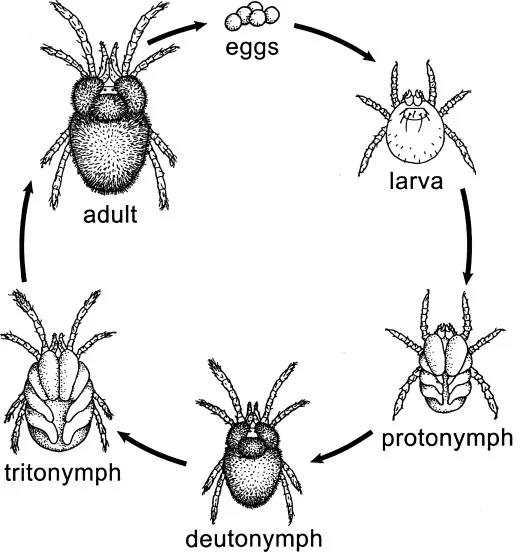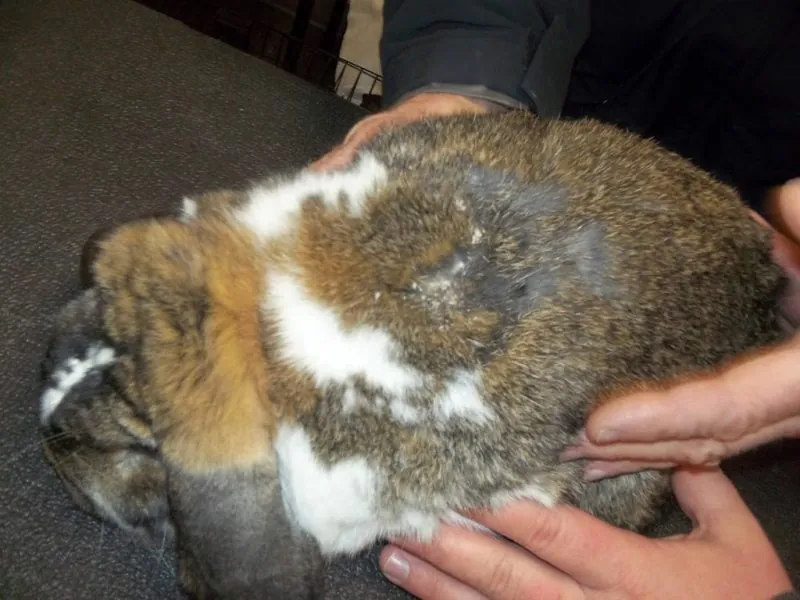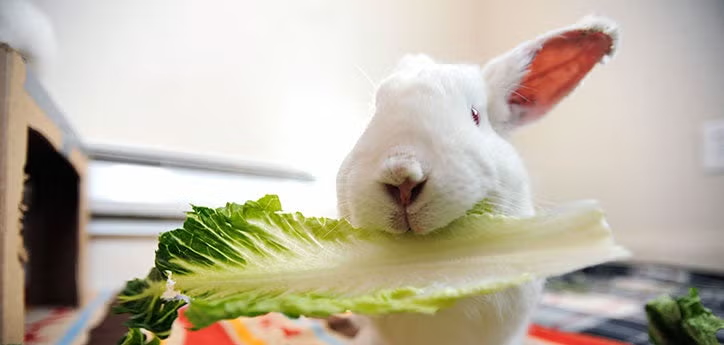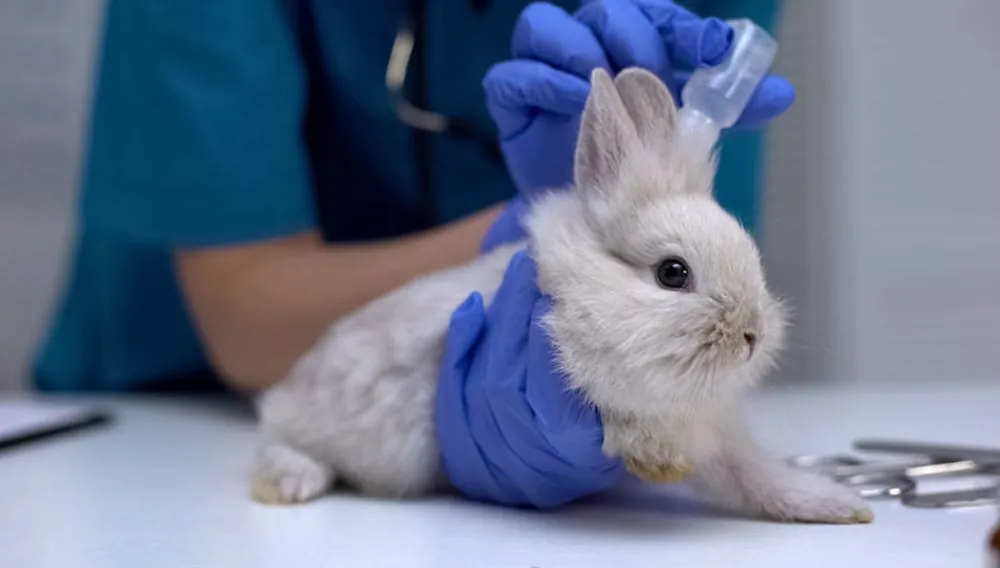If you’ve noticed excessive flaky skin, itching, or odd “dandruff” that seems to move on your rabbit, you’re likely searching for how to treat walking dandruff in rabbits at home. Walking dandruff, or cheyletiellosis, is a common skin issue in rabbits caused by the Cheyletiella mite. Fortunately, with timely action and some at-home care strategies, you can help your bunny recover, ease their discomfort, and prevent future flare-ups—all while keeping your home and other pets safe.
This comprehensive guide provides actionable advice, step-by-step tips, and expert insight to empower rabbit owners seeking natural or practical remedies for walking dandruff.
What Is Walking Dandruff in Rabbits?
Walking dandruff refers to a skin infestation caused by Cheyletiella parasitovorax mites. These parasites live on your rabbit’s skin and fur, appearing as patchy “moving dandruff” due to the mites themselves.
Signs and Symptoms
- White, flaky skin (dandruff), especially over the neck, shoulders, or back
- Mild to severe itching and scratching (not always present)
- Occasional bald patches or thinning fur
- Raised or scabby skin in severe cases
- Visible mites or eggs on hair shafts
Early detection is key—if you suspect walking dandruff, prompt action helps stop it from spreading to other pets or returning after treatment.
How to Treat Walking Dandruff in Rabbits at Home: Getting Started
Before beginning any treatment plan, it’s important to confirm the diagnosis. While many home remedies can help, severe or persistent cases require veterinary advice—especially if your rabbit appears lethargic, stops eating, or develops open sores.
Step 1: Isolate the Infected Rabbit
- Separate affected rabbits from healthy ones to prevent mite transmission.
- Use a dedicated area with clean bedding during treatment.
Step 2: Clean the Environment Thoroughly
Cheyletiella mites can survive for up to 10 days off a host. It’s crucial to clean and treat not just your rabbit, but also their living space:
- Remove and discard all bedding, hay, and uneaten food.
- Wash cages, hutches, litter boxes, and all accessories with hot soapy water.
- Vacuum carpets, rugs, and soft furnishings in any room the rabbit uses.
- For multi-pet households, treat all rabbits and potentially affected cats or dogs, as these mites are contagious.
Step 3: Focus on Topical and Environmental Treatments
There are several home-care options and over-the-counter remedies for managing walking dandruff in rabbits.
Natural and At-Home Treatments for Walking Dandruff

1. Diatomaceous Earth
Food-grade diatomaceous earth (DE) is a fine powder from fossilized algae that can dehydrate and kill mites.
- Dust a small amount onto a paper towel, then gently rub it into your rabbit’s fur, taking care to avoid nose, eyes, and mouth.
- Repeat every 7–10 days, ensuring both rabbit and environment remain dry for best effectiveness.
- Avoid overuse, as inhaled dust can irritate respiratory systems.
2. Oatmeal Baths
A soothing oatmeal bath may ease itching and inflammation:
- Grind plain oatmeal into powder; dissolve in lukewarm water (not hot).
- Gently bathe your rabbit, avoiding the face and ears.
- Rinse thoroughly and dry your rabbit completely to avoid chilling.
3. Apple Cider Vinegar Spray
Apple cider vinegar is thought to deter mites and soothe skin:
- Mix equal parts organic apple cider vinegar and water.
- Lightly mist your rabbit’s coat (avoid eyes and ears), or apply with a damp cloth.
4. Neem Oil (For Spot Treatment)
Neem oil has insecticidal and anti-inflammatory properties:
- Dilute a few drops of neem oil in a carrier oil like coconut, and apply sparingly to affected areas.
- Use in very small amounts and monitor for any skin reaction.
5. Calendula Cream
Calendula, used as a cream or tea-soaked cloth, can gently heal irritation and support skin recovery.
Safe Veterinary-Approved Home Medications
Ivermectin or Selamectin
While true home treatment involves natural methods, many rabbit owners can safely apply veterinarian-prescribed spot-on medications, such as:
- Revolution® (selamectin): Applied to the skin, usually every 2 weeks for 3 doses.
- Ivermectin: Injectable or oral formulas, sometimes available as a topical spot-on for rabbits.
Important: Avoid over-the-counter flea treatments for dogs and cats (especially those containing fipronil or permethrin), as these can be toxic to rabbits. Never use Frontline® on rabbits.
How to Treat Walking Dandruff in Rabbits at Home: Step-by-Step Routine
Here’s a sample daily and weekly plan for treating mild to moderate walking dandruff at home (always consult your vet before starting new treatments):
| Day | Task |
|---|---|
| Daily | Spot-clean soiled bedding, inspect skin, monitor for worsening |
| Weekly | Deep clean cage/hutch, discard bedding, sanitize accessories |
| Every 7 Days | Reapply diatomaceous earth (if using) |
| 2–3x Week | Oatmeal bath (soothes, not for all rabbits—test first) |
| Every 2 Weeks | Apply veterinarian-approved selamectin or ivermectin if prescribed |
| As Needed | Use calendula or neem for spot care of irritation |
Preventing Recurrence and Protecting Your Home
To truly address how to treat walking dandruff in rabbits at home, focus on ongoing prevention:
Change Bedding and Accessories Regularly
- Use fresh bedding and hay, especially during and after treatment.
- Wash washable items on a hot cycle.
Groom and Inspect Rabbits Frequently
- Brush your rabbit weekly to remove loose fur and skin, especially in long-haired breeds.
- Examine your rabbit’s skin and fur for flakes, bald spots, or mites.
Maintain Good Husbandry
- Feed a balanced, high-fiber diet to support coat and immune health.
- Keep living areas clean, dry, and well-ventilated.
- Reduce rabbit stress, as illness and stress lower defenses against skin parasites.
Watch for Cross-Contamination
- If you have more than one rabbit, treat them all simultaneously.
- Avoid sharing grooming tools between animals unless fully sanitized.
When to Seek Professional Help
While mild cases can be managed at home, call your veterinarian if:
- The dandruff or mite problem persists after 2–3 weeks of home care.
- Your rabbit shows hair loss, open sores, or severe skin thickening.
- They stop eating, seem listless, or develop additional symptoms.
- Over-the-counter medications or home remedies cause any adverse reaction.
A veterinarian can confirm the diagnosis with a fur sample and recommend safe, effective medications.
Understanding the Life Cycle of Cheyletiella Mites and Its Impact on Treatment

To successfully treat walking dandruff in rabbits at home, it helps to understand the biology and life cycle of the responsible mites — Cheyletiella parasitovorax.
Life Cycle Overview
- Egg Stage: Females lay eggs on the fur and skin, which hatch in about 3 to 5 days.
- Larval Stage: Larvae develop under the skin surface and mature into nymphs.
- Nymph Stage: Nymphs resemble miniature adults. They molt twice before becoming adults.
- Adult Stage: Adults live on the skin’s surface, feeding on skin debris, and reproducing rapidly.
Implications for Treatment
- Because eggs hatch in only a few days, a one-time treatment is ineffective.
- Multiple treatments spaced over 2–3 weeks are needed to interrupt the mite life cycle fully.
- Environmental cleaning complements treatment by killing mites off the host.
Tip: Re-treat every 7 to 10 days for at least 3 cycles to ensure all mites and eggs are eradicated.
Identifying Walking Dandruff Versus Other Skin Conditions in Rabbits

Walking dandruff can be mistaken for other rabbit skin issues. Accurate identification is crucial for proper treatment.
Common Skin Disorders to Differentiate
- Ringworm: A fungal infection causing circular patches of hair loss and scaly skin.
- Flystrike: Caused by flies laying eggs on soiled or injured skin, leading to maggot infestation.
- Fur Mites and Cheyletiella: Usually cause white dandruff and mild to severe itching.
- Allergic Dermatitis: Reaction to environmental allergens can cause redness but usually lacks moving flakes.
- Bacterial Infections: Often accompanied by swelling, pus, or bad odor.
How to Tell Walking Dandruff Apart
- Presence of moving white flakes on fur.
- Usually minimal redness early on unless secondary infections develop.
- Intense grooming behavior but sometimes the rabbit shows little itching.
Pro Tip: If you are unsure, collect fur samples for your vet’s examination under a microscope—this is the definitive way to diagnose walking dandruff.
Dietary Support to Enhance Skin Health and Immune Response

Good nutrition plays a vital role in helping your rabbit fight off infestations and maintain healthy skin.
Key Nutrients to Include in Your Rabbit’s Diet
- Omega-3 Fatty Acids: Support skin healing and reduce inflammation. Include sources like flaxseed or alfalfa hay.
- Vitamin A: Essential for skin and mucous membrane integrity. Dark leafy greens, carrots, and bell peppers are rich sources.
- Zinc: Acts as an immune booster and supports skin repair. Leafy greens and pellets often provide sufficient zinc.
- Biotin: Supports skin and fur quality; many commercial pellets contain this vitamin.
Hydration and Its Importance
- Adequate water intake prevents dry skin, which is more prone to irritation.
- Always provide fresh, clean water, and consider offering watery greens like cucumbers to enhance hydration.
Grooming Techniques to Assist Treatment and Comfort
Frequent and gentle grooming can help remove dead flakes and soothe irritated skin.
Recommended Grooming Practices
- Use a soft brush designed for rabbits to gently remove loose dandruff and fur.
- Avoid vigorous brushing that may damage inflamed skin.
- Apply a light grooming spray (preferably vet-approved) to reduce static and ease brushing.
- Trim matted fur carefully around affected areas to improve cleaning and topical treatment penetration.
Warning: Never use human shampoos or flea treatments. Only use products safe for rabbits.
How Environmental Factors Influence Walking Dandruff Recurrence
Environmental conditions significantly affect the likelihood of reinfestation or persistence.
Factors That Encourage Mite Survival
- High humidity creates a favorable environment for mites.
- Poor ventilation and dirty cages provide breeding grounds.
- Crowded housing increases cross-contamination risk.
Environmental Control Tips
- Maintain dry and clean bedding, changing it frequently.
- Use breathable cage liners and avoid hardwood shavings which retain moisture.
- Ensure good airflow in rabbit enclosures while protecting from drafts.
- Regularly disinfect cage surfaces and accessories with safe cleaners.
Using Essential Oils Safely in Rabbit Skin Care: What You Need to Know
Some rabbit owners consider essential oils as natural remedies; however, safety is paramount.
Oils That Might Help
- Lavender Oil: Mild antiseptic and calming effect — only very dilute use recommended.
- Chamomile: Anti-inflammatory and soothing, used in diluted form in rinse solutions.
- Neem Oil: Has insecticidal properties but must be heavily diluted.
Safety Precautions
- Never apply pure essential oils directly to rabbit skin.
- Dilute oils at least 1:10 with carrier oils safe for rabbits (e.g., coconut oil).
- Perform patch tests to detect any allergic reactions.
- Avoid oils toxic to rabbits, such as tea tree, eucalyptus, and peppermint in undiluted forms.
- Consult with a veterinarian – ideally one specializing in exotic pets – before use.
Monitoring and Keeping a Treatment Journal for Walking Dandruff
Keeping track of your rabbit’s condition and treatments can improve outcomes.
What to Record
- Date and type of each treatment applied.
- Observed symptoms: intensity of dandruff, scratching, skin condition.
- Diet changes, supplements, or environmental adjustments made.
- Any side effects or adverse reactions.
- Vet visits and medical advice given.
Benefits
- Helps identify what works best for your pet.
- Assists in communicating with your vet.
- Provides a clear timeline of progress and relapse potential.
Supporting Multiple Pets with Walking Dandruff
In homes with multiple rabbits or other pets, coordinated care is critical.
Cross-species Considerations
- Cheyletiella mites can infect cats and dogs, causing temporary itchiness.
- Treat all pets simultaneously to prevent reinfestation cycles.
- Use species-appropriate medications—never use dog or cat flea treatments on rabbits.
Cleaning Shared Spaces Thoroughly
- Vacuum shared areas multiple times a week.
- Wash pet bedding and toys in hot water.
- Keep each pet’s grooming tools separate or disinfect after every use.
Frequently Asked Questions
Can walking dandruff in rabbits be cured at home?
Mild infestations can often be managed with thorough cleaning, environmental control, and natural remedies. For moderate or severe cases, or if home methods do not improve the situation, veterinary prescription treatments are safest and most effective.
Is walking dandruff dangerous to humans or other pets?
Cheyletiella mites can temporarily affect humans or other pets, causing mild itchiness. Treat all animals in the household and practice good hygiene to prevent spread.
Are home remedies safer than medications?
Natural remedies can support skin health and comfort, but prescription medications like selamectin or ivermectin are often necessary for full resolution. Always confirm with your vet before using any new product on rabbits, as some pet products for other species are toxic to bunnies.
Conclusion
Understanding how to treat walking dandruff in rabbits at home starts with early detection, rigorous hygiene, and the right at-home remedies. Natural treatments like diatomaceous earth, oatmeal baths, and gentle grooming support mild cases, while prescription medicated spot-ons may be necessary in moderate or persistent infestations. Consistent environmental cleaning and preventative care are essential to fully banish these stubborn mites and maintain your rabbit’s comfort, coat, and health.
